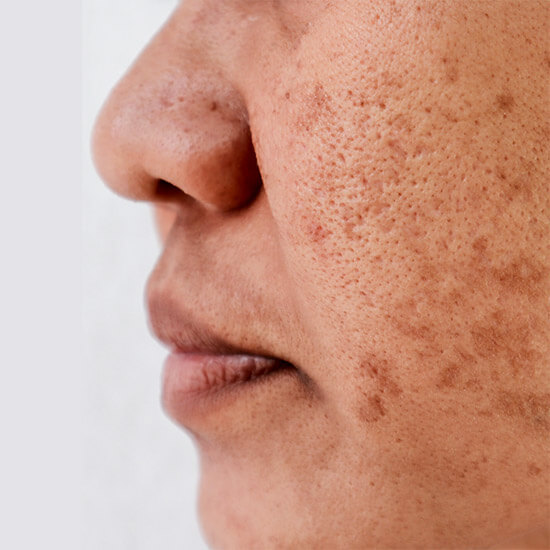Melasma, characterized by brown or gray-brown patches on the skin, particularly on the face, can be challenging to treat. Selecting the most appropriate treatment requires a careful assessment of various factors, including the severity of the condition, skin type, and individual preferences. This guide aims to provide you with the essential steps and considerations for choosing the right Melasma Treatment In Dubai.
Understand Your Skin Type
Before starting any treatment, it is crucial to understand your skin type. Skin types vary from oily to dry, sensitive to normal, and even combination skin. Knowing your skin type will help you select treatments that are effective and gentle. For example, individuals with sensitive skin may want to avoid harsh chemical peels or strong retinoids, opting instead for milder treatments like azelaic acid or hydroquinone.
Evaluate the Severity of Melasma
Assess the extent and severity of your melasma. Mild cases may respond well to topical treatments, while more severe cases might require a combination of therapies. Consulting with a dermatologist can provide insights into the severity of your condition and what treatments are best suited for you. They can also help determine if melasma is the only concern or if there are underlying issues that need to be addressed.

Consult a Dermatologist
A dermatologist's expertise is invaluable when selecting a melasma treatment. They can perform a thorough skin evaluation and recommend appropriate treatments tailored to your specific needs. A dermatologist can also help identify any underlying causes, such as hormonal changes or sun exposure, and suggest preventive measures to avoid recurrence.
Consider Treatment Options
There are various treatment options for melasma, each with its benefits and drawbacks. Here are some common treatments to consider:
Topical Treatments: Options include hydroquinone, retinoids, and azelaic acid. These are often the first line of defense for melasma and can be effective for many individuals.
Chemical Peels: Superficial chemical peels, such as those containing glycolic acid or salicylic acid, can exfoliate the skin and improve pigmentation. Medium-depth peels may also be considered for more pronounced cases.
Laser Therapy: Different laser treatments, including fractional and Q-switched lasers, target pigmentation without damaging the surrounding skin. While effective, laser treatments may require multiple sessions and can involve some downtime.
Intense Pulsed Light (IPL): IPL is another non-invasive option that uses light to treat pigmentation. It is effective but may not be suitable for all skin types.
Assess Your Lifestyle and Preferences
When choosing a melasma treatment, consider your lifestyle and personal preferences. Some treatments require more downtime or have side effects that may interfere with daily activities. For example, chemical peels and laser treatments may result in redness or peeling, making it necessary to plan for recovery time.
Additionally, some individuals may prefer a more gradual approach, opting for topical treatments that can be integrated into their daily skincare routines. Others may be open to more aggressive treatments for quicker results. Understanding your preferences can guide you in selecting a treatment that fits seamlessly into your life.
Be Aware of Potential Side Effects
Every treatment option comes with potential side effects. It is important to discuss these with your dermatologist to ensure you are fully informed. For instance, hydroquinone can cause irritation or allergic reactions, while laser treatments may lead to redness, swelling, or changes in skin texture. Knowing the risks associated with each option will help you make a more informed decision.
Plan for Sun Protection
Regardless of the treatment chosen, sun protection is crucial in managing melasma. UV exposure can exacerbate pigmentation and diminish the effectiveness of treatments. Select a broad-spectrum sunscreen with an SPF of 30 or higher and incorporate sun protection into your daily routine. This may also involve wearing hats, sunglasses, and seeking shade to minimize exposure.
Track Progress and Adjust Treatment as Needed
Once you start treatment, monitor your skin’s response closely. Some treatments may take several weeks to show results, so patience is key. If you do not see improvement after a few months, consult your dermatologist to reassess your treatment plan. They may recommend adjusting the dosage or trying a different combination of treatments for better outcomes.
Consider Combination Therapy
Often, the most effective approach to treating melasma involves a combination of therapies. For instance, using topical treatments alongside chemical peels or laser therapy can enhance results and address melasma more effectively. Discuss with your dermatologist the possibility of a multi-faceted approach tailored to your specific needs.
Understand the Financial Implications
Melasma treatments can vary in cost depending on the type and frequency of treatment. It’s important to consider your budget and discuss financial options with your dermatologist. Some treatments may be covered by insurance, while others may not, so clarifying this ahead of time will help you make an informed decision.
Conclusion
Choosing the right melasma treatment involves a careful consideration of your skin type, the severity of the condition, lifestyle preferences, and potential side effects. Consulting with a dermatologist is crucial to develop a personalized treatment plan tailored to your unique needs. With the right approach, melasma can be effectively managed, leading to improved skin tone and renewed confidence. Remember that sun protection is essential throughout any treatment process to maintain results and prevent recurrence.





Comments